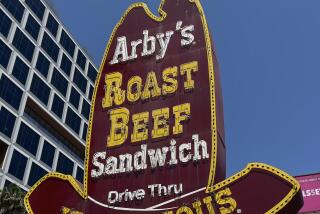Some Tips for Choosing Best Thermometer
- Share via
Better Homes and Gardens
When it’s hot, it’s hot--or maybe it’s not hot enough.
To check food temperatures when cooking and baking, use a specially designed thermometer. There are about as many varieties of thermometers as there are foods.
A thermometer can be tested for accuracy by submerging its tip in boiling water. It should read 212 degrees Fahrenheit. If it reads 210 degrees, cook to a temperature two degrees lower than the recipe requires. If it reads 214 degrees, cook to two degrees higher.
Some handy thermometers and usage tips are listed here:
--A candy thermometer has the temperature and the degrees of candy doneness (hard crack and so forth) marked on the thermometer. Some candy thermometers also include markings for deep frying.
--A meat thermometer indicates the temperature for different meats and their levels of doneness. Some thermometers remain in the meat during roasting; others plug into the meat for just a moment for an instant reading.
--When cakes burn, it could be a signal that an oven’s temperature is higher than the setting indicates. Use an oven thermometer to verify.
--Keep an eye on the refrigerator and freezer temperature with a thermometer. Refrigerators should be set at about 40 degrees and freezers should be below zero.
--Besides the temperature probe that’s standard equipment on many microwave ovens, choose from different microwave-safe thermometers. Some can be used interchangeably in a conventional oven.
More to Read
Eat your way across L.A.
Get our weekly Tasting Notes newsletter for reviews, news and more.
You may occasionally receive promotional content from the Los Angeles Times.








